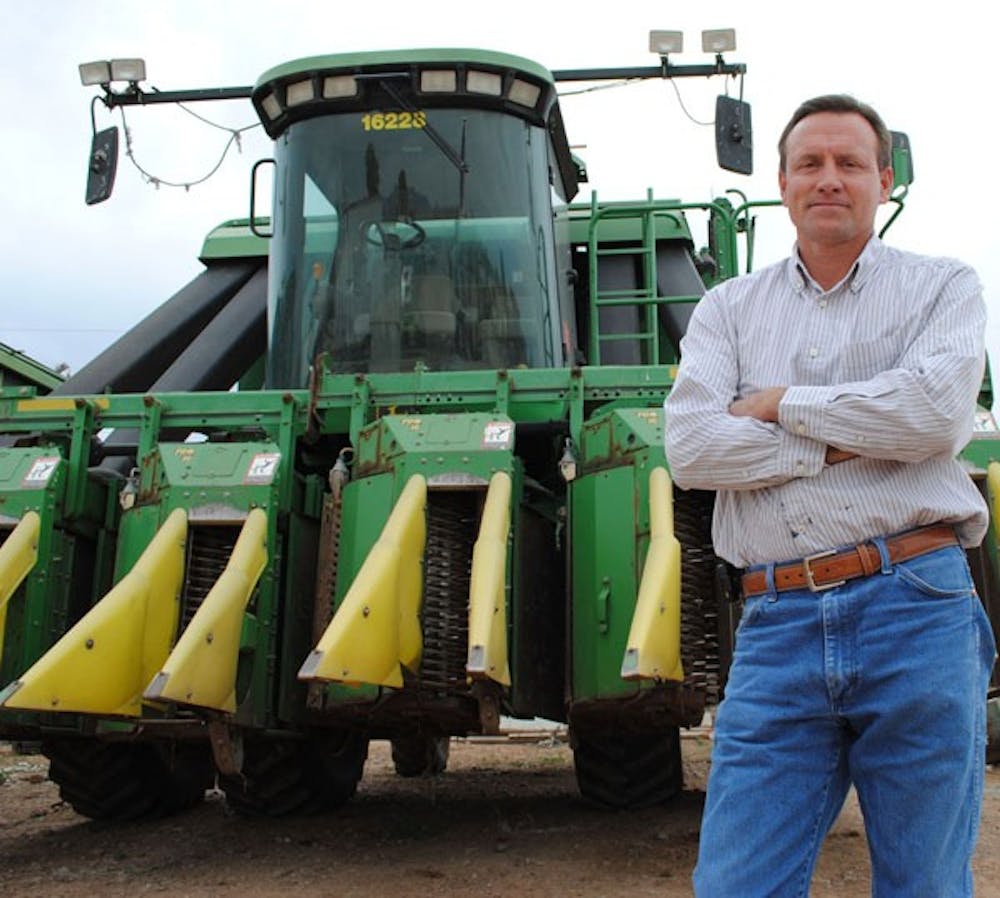Rising cotton prices around the world could mean paying almost double for the perfect pair of jeans.
Cotton is now about $1.80 per pound, more than twice what it was six months ago, prices Adam Hatley hasn’t seen in his 25 years of growing cotton.
“For years it’s been pretty stable,” said Hatley, owner of Associated Farms in Scottsdale. “I’ve seen it go the opposite direction. I’ve seen it drop as low as 34 cents a pound.”
Hatley said the rise in prices has been good for him, though consumers might feel differently when they pay for their cotton products.
By: Blake Wilson
“The prices of all the commodities have been going up the past few years and obviously that’s good for us farmers, but it also raises the prices of what we purchase in everyday life,” Hatley said.
Rick Lavis, executive vice president of the Arizona Cotton Growers Association, said China’s increasing need for cotton is driving the spike in cotton prices.
“The reality simply is that China ran out of cotton,” Lavis said.
China is the primary manufacturer of many cotton products, including shirts, sheets and denims, but is not producing enough of its own cotton to meet the demand.
“[China] needs cotton to manufacture products both for internal consumption and worldwide consumption,” Lavis said.
Prices will likely go down in the next few years, he said, as farmers begin to produce more cotton, lessening the demand.
“Cotton production in Arizona is going to expand,” Lavis said. “We’re going to see a resurgence in cotton acreage probably this year or next year.”
Mark Manfredo, associate professor of the Morrison School of Agribusiness and Resource Management at the W. P. Carey School of Business, said the current rise in cotton prices is going to be beneficial to rural areas that have been hit hardest by the recession.
“It could really boost those communities where cotton is being produced,” Manfredo said.
On the flip side, several companies, including the popular cotton-clothing producer Hanes, have announced they will be increasing their prices to offset the high cost of cotton.
“Cotton is the primary input for all the products they’re making, so they’re going to have to pass those costs off on their consumers,” he said. “A company like Hanes doesn’t really want to do that … their concern is that consumers might go elsewhere, either by buying cheaper products or simply by buying fewer T-shirts.”
Tourism junior Stephanie Overkamp said while she doesn’t shop much, a rise in clothing prices would affect students in general.
“As a student, you don’t really have a lot of money,” Overkamp said. “If things are more expensive, it just makes it a little bit harder on us.”
Reach the reporter at ymgonzal@asu.edu





